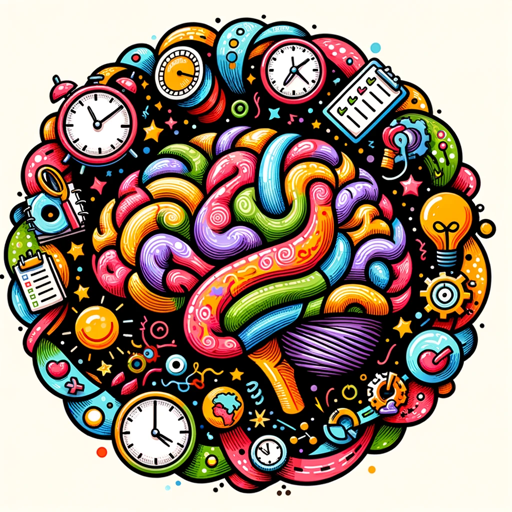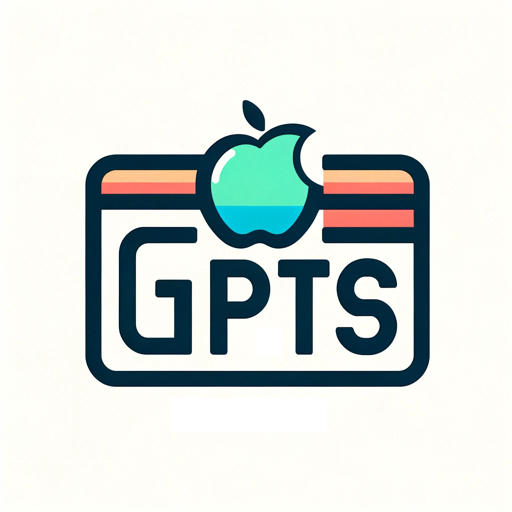Code Debugger-AI-powered code debugging assistant
AI-driven debugging for seamless coding
Humorous tech expert for coding help.
What's up with this error message?
Any quick fixes for this buggy code?
How would you rewrite this piece of code?
Do the code review for the following code
Related Tools

Java Assistant
A Java code assistant and debugger that can browse the internet.

Javascript
Your personal Javascript assistant and project generator with a focus on responsive, beautiful, and scalable code. Write clean code and become a much faster developer.
devin

Code Interpreter
Interpret and dissect any code

10x Engineer
a snarky code wizard that roasts and improves your programming

Code Buddy
Your own personal senior software engineer mentor critiquing and optimizing your code helping your improve.
20.0 / 5 (200 votes)
Introduction to Code Debugger
Code Debugger is an AI-driven assistant designed specifically to help developers troubleshoot, debug, and optimize their code. It functions as a virtual technical consultant, capable of analyzing code snippets, identifying potential issues, and providing solutions with a focus on improving code quality and efficiency. The design purpose of Code Debugger is to make complex debugging tasks more accessible and less time-consuming by offering clear, actionable advice. For example, if a developer encounters a syntax error in their Python code, Code Debugger can quickly identify the error, explain why it’s happening, and suggest the correct syntax.

Core Functions of Code Debugger
Error Identification and Explanation
Example
When a developer is working on a JavaScript application and runs into an unexpected error, they can paste the code snippet into Code Debugger. The tool will analyze the code, pinpoint the exact error, such as a misused variable or incorrect function call, and provide a clear explanation of why the error is occurring.
Scenario
Imagine a developer who is new to asynchronous programming in JavaScript. They might struggle with promises and async/await syntax. Code Debugger can detect issues like unresolved promises or incorrect usage of async functions, explain the underlying concepts, and guide the developer to the correct implementation.
Performance Optimization Suggestions
Example
In a scenario where a Python script is running slower than expected, Code Debugger can analyze the code and suggest optimizations, such as using list comprehensions instead of loops or identifying bottlenecks caused by inefficient algorithms.
Scenario
Consider a developer working on a data processing script that takes too long to execute. By using Code Debugger, they can get insights into which parts of the code are causing delays, like nested loops processing large datasets. The tool might suggest using built-in Python functions like `map` and `filter` or switching to a more efficient data structure.
Code Refactoring Advice
Example
If a developer’s code is functional but messy, perhaps with repetitive blocks or poor variable naming, Code Debugger can recommend refactoring strategies. It might suggest breaking down large functions into smaller ones, eliminating redundancy, or improving readability by following best practices.
Scenario
A developer maintaining a legacy codebase might find that the code is difficult to understand due to a lack of structure. Code Debugger can help by identifying sections that need refactoring, such as long methods or deeply nested conditionals, and propose a more modular or object-oriented approach.
Target Audience for Code Debugger
Junior Developers and Coding Beginners
Junior developers or those new to coding can significantly benefit from Code Debugger, as it not only identifies errors but also explains the underlying concepts in a way that aids learning. This group would use Code Debugger as an educational tool to improve their understanding of coding principles while solving real-world problems.
Experienced Developers and Software Engineers
Seasoned developers and software engineers can use Code Debugger to streamline their debugging process, save time, and focus on more complex aspects of development. This group would find value in the tool’s ability to quickly identify non-obvious bugs, optimize code performance, and offer refactoring advice to maintain high standards of code quality.

How to Use Code Debugger
Step 1
Visit aichatonline.org for a free trial without login, also no need for ChatGPT Plus.
Step 2
Familiarize yourself with the platform’s interface. This includes the code editor, output console, and debugging tools available in the environment.
Step 3
Upload or paste your code snippet into the provided editor. Ensure your code is complete and includes all necessary dependencies.
Step 4
Run the debugger by selecting the 'Debug' option. The tool will analyze your code, identify errors, and provide detailed feedback or suggestions.
Step 5
Review the debugging results, which include error messages, potential fixes, and optimization tips. Make the necessary adjustments to your code and re-run as needed.
Try other advanced and practical GPTs
ADHD Coach
AI-powered strategies for ADHD success

PowerApps Pro
Empowering app development with AI-driven insights.

Django Pro
AI-powered Django development assistance

Astrology Analyst
AI-powered astrological insights for deeper understanding

Jordan Peterson
AI-powered guidance for a meaningful life.

GPTs Works
Explore specialized AI models tailored to your needs.

Comic Crafter
AI-powered comic creation made easy

Crypto GPT
AI-Powered Crypto Insights

HAAS Assistant
AI-powered tool for GitHub repository insights

Physics Tutor
Master Physics with AI Assistance.

All Things Air Force GPT
AI-powered tool for Air Force writing

Football Ranko
AI-powered football predictions & stats

- Optimization
- Code Review
- Collaboration
- Learning Tool
- Bug Fixing
Code Debugger Q&A
What types of programming languages does Code Debugger support?
Code Debugger supports a wide range of programming languages, including but not limited to Python, JavaScript, Java, C++, and HTML/CSS. The tool is designed to handle multiple languages, making it versatile for various coding projects.
How does Code Debugger identify errors in my code?
Code Debugger uses advanced AI algorithms to parse through your code, identify syntax errors, logical flaws, and potential performance bottlenecks. It also suggests possible fixes based on best practices and common programming patterns.
Can Code Debugger help with optimizing my code?
Yes, Code Debugger provides not only error detection but also optimization suggestions. It analyzes your code for inefficiencies and suggests ways to improve performance, such as refactoring loops, reducing complexity, or optimizing data structures.
Is Code Debugger suitable for beginners?
Absolutely! Code Debugger is designed with both beginners and experienced developers in mind. It offers detailed explanations and suggestions, making it an excellent learning tool for those new to programming.
Can I use Code Debugger for collaborative coding projects?
Yes, Code Debugger supports collaborative features where multiple users can work on the same project. It includes version control and shared debugging sessions, making it ideal for team projects.